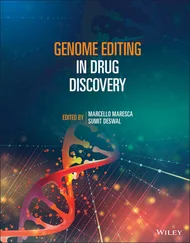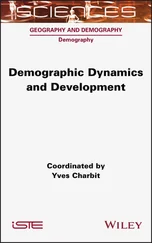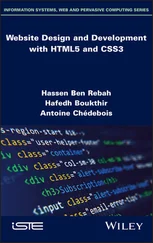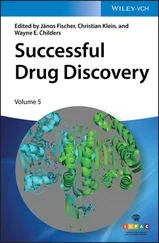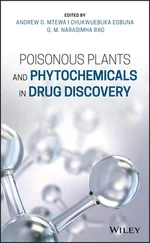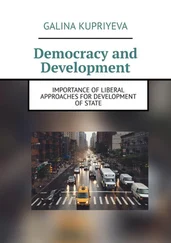Contemporary Accounts in Drug Discovery and Development
Здесь есть возможность читать онлайн «Contemporary Accounts in Drug Discovery and Development» — ознакомительный отрывок электронной книги совершенно бесплатно, а после прочтения отрывка купить полную версию. В некоторых случаях можно слушать аудио, скачать через торрент в формате fb2 и присутствует краткое содержание. Жанр: unrecognised, на английском языке. Описание произведения, (предисловие) а так же отзывы посетителей доступны на портале библиотеки ЛибКат.
- Название:Contemporary Accounts in Drug Discovery and Development
- Автор:
- Жанр:
- Год:неизвестен
- ISBN:нет данных
- Рейтинг книги:4 / 5. Голосов: 1
-
Избранное:Добавить в избранное
- Отзывы:
-
Ваша оценка:
- 80
- 1
- 2
- 3
- 4
- 5
Contemporary Accounts in Drug Discovery and Development: краткое содержание, описание и аннотация
Предлагаем к чтению аннотацию, описание, краткое содержание или предисловие (зависит от того, что написал сам автор книги «Contemporary Accounts in Drug Discovery and Development»). Если вы не нашли необходимую информацию о книге — напишите в комментариях, мы постараемся отыскать её.
A useful guide for medicinal chemists and pharmaceutical scientists Contemporary Accounts in Drug Discovery and Development
Contemporary Accounts in Drug Discovery and Development
Contemporary Accounts in Drug Discovery and Development
Contemporary Accounts in Drug Discovery and Development — читать онлайн ознакомительный отрывок
Ниже представлен текст книги, разбитый по страницам. Система сохранения места последней прочитанной страницы, позволяет с удобством читать онлайн бесплатно книгу «Contemporary Accounts in Drug Discovery and Development», без необходимости каждый раз заново искать на чём Вы остановились. Поставьте закладку, и сможете в любой момент перейти на страницу, на которой закончили чтение.
Интервал:
Закладка:
17 17 Business WIre (2020).Schrödinger announces expanded collaboration with AstraZeneca to extend computational modeling solutions to biologics. https://www.businesswire.com/news/home/20200323005050/en/Schr%C3%B6dinger‐Announces‐Expanded‐Collaboration‐AstraZeneca‐Extend‐Computational(accessed 29 August 2020).
18 18 Rees, V. (2020).Discovering and designing drugs with artificial intelligence. https://www.drugtargetreview.com/article/56366/discovering‐and‐designing‐drugs‐with‐artificial‐intelligence(accessed 30 August 2020).
19 19 Bell, J.A., Cao, Y., Gunn, J.R. et al. (2012). PrimeX and the Schrödinger computational chemistry suite of programs. In: International. Tables for Crystallography, 534–538. Wiley https://doi.org/10.1107/97809553602060000864.
20 20 Robertson, M.J., van Zundert, G.C.P., Borrelli, K., and Skiniotis, G. (2020). GemSpot: a pipeline for robust modeling of ligands into Cryo‐EM maps. Structure 28: 707–716.e3.
21 21 van Zundert, G.C.P., Moriarty, N.W., Sobolev, O.V. et al. (2020). Macromolecular refinement of X‐ray and cryo‐electron microscopy structures with Phenix / OPLS3e for improved structure and ligand quality. bioRχiv. https://doi.org/10.1101/2020.07.10.198093.
22 22 Beuming, T., Che, Y., Abel, R. et al. (2012). Thermodynamic analysis of water molecules at the surface of proteins and applications to binding site prediction and characterization. Proteins 80: 871–883.
23 23 Young, T., Abel, R., Kim, B. et al. (2007). Motifs for molecular recognition exploiting hydrophobic enclosure in protein–ligand binding. Proc. Natl. Acad. Sci.: 808–813. https://doi.org/10.1073/pnas.0610202104.
24 24 Abel, R., Young, T., Farid, R. et al. (2008). Role of the active‐site solvent in the thermodynamics of factor Xa ligand binding. J. Am. Chem. Soc. 130: 2817–2831.
25 25 Bayden, A.S., Moustakas, D.T., Joseph‐McCarthy, D., and Lamb, M.L. (2015). Evaluating free energies of binding and conservation of crystallographic waters using SZMAP. J. Chem. Inf. Model. 55: 1552–1565.
26 26 Nittinger, E., Gibbons, P., Eigenbrot, C. et al. (2019). Water molecules in protein‐ligand interfaces. Evaluation of software tools and SAR comparison. J. Comput. Aided Mol. Des. 33: 307–330.
27 27 Ghanakota, P., DasGupta, D., and Carlson, H.A. (2019). Free energies and entropies of binding sites identified by MixMD Cosolvent simulations. J. Chem. Inf. Model. 59: 2035–2045.
28 28 Ghanakota, P., van Vlijmen, H., Sherman, W., and Beuming, T. (2018). Large‐scale validation of mixed‐solvent simulations to assess hotspots at protein–protein interaction interfaces. J. Chem. Inf. Model.: 784–793. https://doi.org/10.1021/acs.jcim.7b00487.
29 29 Ghanakota, P. and Carlson, H.A. (2016). Driving structure‐based drug discovery through Cosolvent molecular dynamics. J. Med. Chem. 59: 10383–10399.
30 30 Ghanakota, P. and Carlson, H.A. (2016). Moving beyond active‐site detection: MixMD applied to allosteric systems. J. Phys. Chem. B 120: 8685–8695.
31 31 Bian, Y. and Xie, X.‐Q.S. (2018). Computational fragment‐based drug design: current trends, strategies, and applications. AAPS J. 20: 59.
32 32 Blay, V., Tolani, B., Ho, S.P., and Arkin, M.R. (2020). High‐throughput screening: today's biochemical and cell‐based approaches. Drug Discov. Today https://doi.org/10.1016/j.drudis.2020.07.024.
33 33 Price, A.J., Howard, S., and Cons, B.D. (2017). Fragment‐based drug discovery and its application to challenging drug targets. Essays Biochem. 61: 475–484.
34 34 Favalli, N., Bassi, G., Scheuermann, J., and Neri, D. (2018). DNA‐encoded chemical libraries – achievements and remaining challenges. FEBS Lett. 592: 2168–2180.
35 35 Yuen, L.H. and Franzini, R.M. (2017). Achievements, challenges, and opportunities in DNA‐encoded library research: an academic point of view. Chembiochem. 18: 829–836.
36 36 Gimeno, A., Ojeda‐Montes, M.J., Tomás‐Hernández, S. et al. (2019). The light and dark sides of virtual screening: what is there to know. Int. J. Mol. Sci.: 20. https://doi.org/10.3390/ijms20061375.
37 37 Fradera, X. and Babaoglu, K. (2017). Overview of methods and strategies for conducting virtual small molecule screening. Curr. Protoc. Chem. Biol. 9: 196–212.
38 38 Pagadala, N.S., Syed, K., and Tuszynski, J. (2017). Software for molecular docking: a review. Biophys. Rev.: 91–102. https://doi.org/10.1007/s12551‐016‐0247‐1.
39 39 Murphy, R.B., Repasky, M.P., Greenwood, J.R. et al. (2016). WScore: a flexible and accurate treatment of explicit water molecules in ligand‐receptor docking. J. Med. Chem. 59: 4364–4384.
40 40 Friesner, R.A., Murphy, R.B., Repasky, M.P. et al. (2006). Extra precision glide: docking and scoring incorporating a model of hydrophobic enclosure for protein‐ligand complexes. J. Med. Chem. 49: 6177–6196.
41 41 Friesner, R.A., Banks, J.L., Murphy, R.B. et al. (2004). Glide: a new approach for rapid, accurate docking and scoring. 1. Method and assessment of docking accuracy. J. Med. Chem.: 1739–1749. https://doi.org/10.1021/jm0306430.
42 42 McGaughey, G.B., Sheridan, R.P., Bayly, C.I. et al. (2007). Comparison of topological, shape, and docking methods in virtual screening. J. Chem. Inf. Model. 47: 1504–1519.
43 43 Sastry, G.M., Inakollu, V.S.S., and Sherman, W. (2013). Boosting virtual screening enrichments with data fusion: coalescing hits from two‐dimensional fingerprints, shape, and docking. J. Chem. Inf. Model. 53: 1531–1542.
44 44 Hawkins, P.C.D., Skillman, A.G., and Nicholls, A. (2007). Comparison of shape‐matching and docking as virtual screening tools. J. Med. Chem. 50: 74–82.
45 45 Grant, J.A., Gallardo, M.A., and Pickup, B.T. (1996). A fast method of molecular shape comparison: a simple application of a Gaussian description of molecular shape. J. Comput. Chem.: 1653–1666. https://doi.org/10.1002/(SICI)1096‐987X(19961115)17:14<1653::AID‐JCC7>3.0.CO;2‐K.
46 46 Bahi, M. and Batouche, M. (2018). Deep learning for ligand‐based virtual screening in drug discovery. In: 2018 3rd International Conference on Pattern Analysis and Intelligent Systems (PAIS).Tebessa, Algeria (24–25 October 2018). IEEE https://doi.org/10.1109/pais.2018.8598488.
47 47 Pérez‐Sianes, J., Pérez‐Sánchez, H., and Díaz, F. (2019). Virtual screening meets deep learning. Curr. Comput. Aided Drug Des. 15: 6–28.
48 48 Gentile, F., Agrawal, V., Hsing, M. et al. (2019). Deep docking – a deep learning approach for virtual screening of big chemical datasets. doi:10.1101/2019.12.15.877316.
49 49 McCloskey, K., Sigel, E.A., Kearnes, S. et al. (2020). Machine learning on DNA‐encoded libraries: a new paradigm for hit finding. J. Med. Chem. 63: 8857–8866.
50 50 Yu, H.S., Modugula, K., Ichihara, O. et al. (2020). General theory of fragment linking in molecular design: why fragment linking rarely succeeds and how to improve outcomes. J. Chem. Theory Comput. https://doi.org/10.1021/acs.jctc.0c01004.
51 51 Zhao, H. (2007). Scaffold selection and scaffold hopping in lead generation: a medicinal chemistry perspective. Drug Discov. Today 12: 149–155.
52 52 Wang, L., Deng, Y., Wu, Y. et al. (2017). Accurate modeling of scaffold hopping transformations in drug discovery. J. Chem. Theory Comput. 13: 42–54.
53 53 Paulsen, J.L., Yu, H.S., Sindhikara, D. et al. (2020). Evaluation of free energy calculations for the prioritization of macrocycle synthesis. J. Chem. Inf. Model. 60: 3489–3498.
54 54 Wagner, V., Jantz, L., Briem, H. et al. (2017). Computational macrocyclization: from de novo macrocycle generation to binding affinity estimation. ChemMedChem 12: 1866–1872.
55 55 Yu, H.S., Deng, Y., Wu, Y. et al. (2017). Accurate and reliable prediction of the binding affinities of macrocycles to their protein targets. J. Chem. Theory Comput. 13: 6290–6300.
Читать дальшеИнтервал:
Закладка:
Похожие книги на «Contemporary Accounts in Drug Discovery and Development»
Представляем Вашему вниманию похожие книги на «Contemporary Accounts in Drug Discovery and Development» списком для выбора. Мы отобрали схожую по названию и смыслу литературу в надежде предоставить читателям больше вариантов отыскать новые, интересные, ещё непрочитанные произведения.
Обсуждение, отзывы о книге «Contemporary Accounts in Drug Discovery and Development» и просто собственные мнения читателей. Оставьте ваши комментарии, напишите, что Вы думаете о произведении, его смысле или главных героях. Укажите что конкретно понравилось, а что нет, и почему Вы так считаете.


